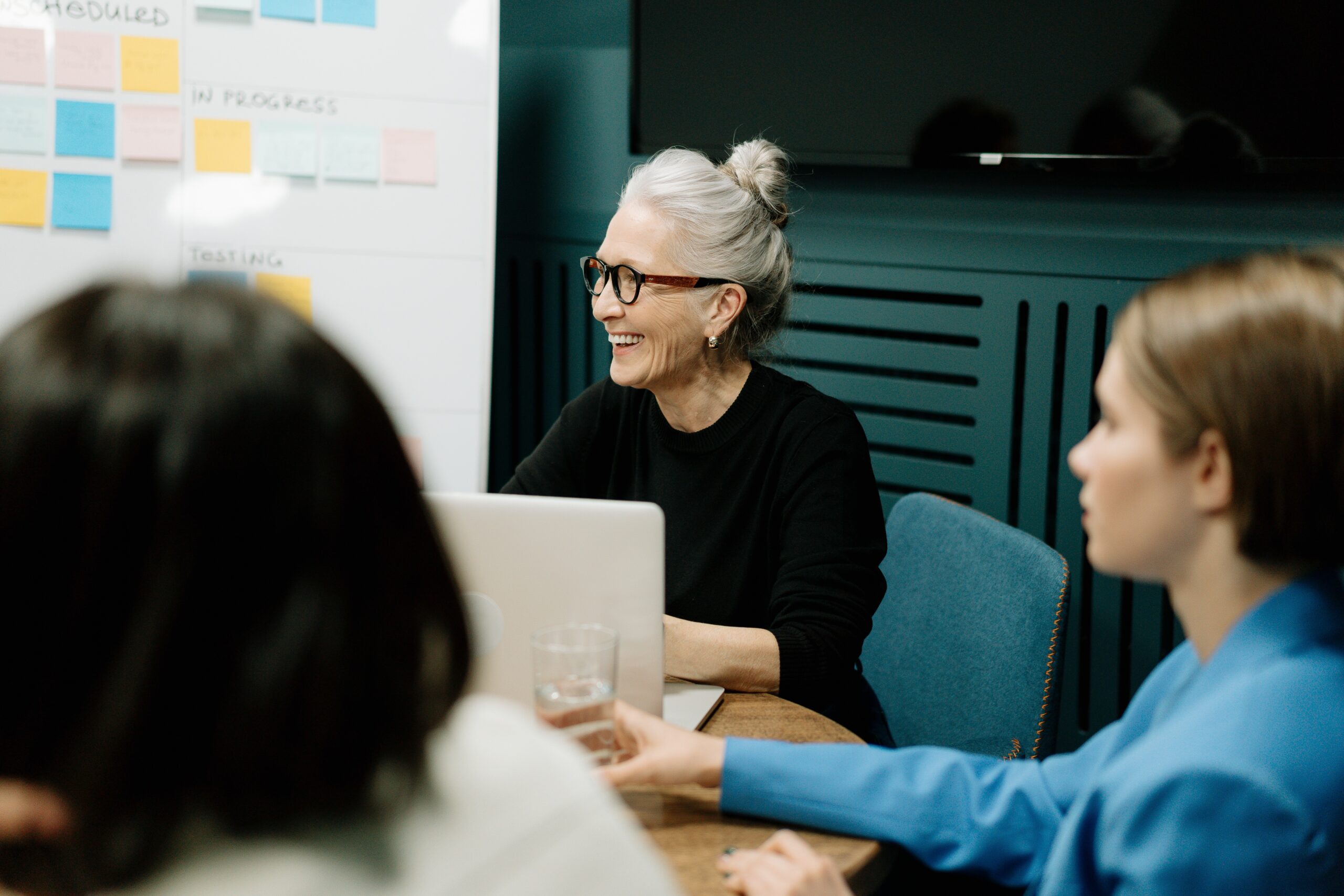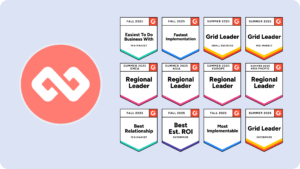In early September 2023, we held a fireside chat on how to enable inclusive leadership and create inclusive leaders in your organization through mentoring. The session was hosted by Mentorloop Co-Founder and COO Heidi Holmes. The panel included Future of Work and Inclusion Expert, Winitha Bonney OAM and the Mentoring Program Coordinator for the Institute of Managers and Leaders ANZ, Shivani Tholasi.
Watch the session below:
It was a really insightful session that covered the role of inclusive leaders and how we can take steps towards encouraging leaders to be inclusive in our organisations. And although we had time for Q&A at the end of the session, we had a few more questions that we did not have time to address at the time. In this article, we want to address them with help from our panellists.
Encouraging leaders to make time for cultivating self-awareness
In a business setting, how can organizations encourage leaders to make time for cultivating self-awareness? Most people, especially senior leaders, might think it’s “frivolous” or something to be done in your own time or something that can make you seem “soft.”
During the session, Winitha said that creating time for this through structured programs (e.g. mentoring, leadership, or coaching programs) is very helpful here. And self-awareness must be a part of these because it’s from a lack of self-awareness that we end up with bullying and toxic cultures.
Winitha also gives an example of how she encourages leaders to take this journey, and it’s by meeting them where they’re at and asking leaders to start with a business problem. She then takes them on a journey from what’s top-of-mind (i.e. a business problem such as KPIs and jobs to be done) to explore how these can be done best or improved by starting with understanding themselves.
In addition to this, Winitha says, “Leaders need containers of time to focus on self-awareness and learn the tools that help them become aware of themselves and others.” She also adds that a great way to go about this is to do it off-site and digital-free spaces in order to really hone in on the self.
Heidi adds that throughout the years of working on mentoring programs, she has seen so many mentors say that the mentoring experience has given them so much, that they’ve learned so much from their mentees as well. This is because mentoring is a way to break down barriers and as a natural outcome of that, it leads to self-discovery and self-awareness.
And Winitha further highlights this by saying that actually, being both a mentor and a mentee is probably the best way to become a better leader overall – even more so than completing an MBA. And that’s because being in a mentoring relationship comes with real-life experience and exposes you to real lived experiences.
Shivani agrees with this and adds that
Shivani agrees that providing leadership development programs, especially ones that emphasize self-reflection, are a good way to encourage leaders to make time for cultivating self-awareness. She recommends offering resources like coaching and feedback mechanisms as well so your leaders can feel well-supported in this journey.
She also adds that an organization that fosters a culture that values personal growth and introspection will go a long way in helping achieve this on the way to creating inclusive leaders. One of the tips she shared is to allocate 30 minutes to an hour for your leaders to have a regular meeting with themselves, either weekly or fortnightly, to engage in self-reflection and focus on personal development.
Encouraging leaders to join mentoring programs to get exposure to diverse groups
How do we encourage leaders to join (mentoring) programs like (IMLANZ’s) despite the fears mentioned around doing or saying the wrong thing, especially when they don’t have a lot of experience with diverse groups? (e.g. older leaders in very old-school industries)
Winitha encourages providing leaders with initial training and resources to guide them – “mentoring the mentors,” if you will. Meet people, your leaders included, where they’re at so you can create trust. Because in order to create the desired outcome to create safety, respect, and belonging, you have to create that with them first.
It’s crucial to create a safe space with no judgment for them to unpack their biases and beliefs and eventually ask uncomfortable questions. It’s important that this is role-modelled for them as the standard so they can do the same for their mentees and teams.
Also, Winitha says that it’s important not to throw them into the deep end. Incremental steps are the way to go, which is why it’s important within the mentoring relationship to have structure. And with that safe space you’ve created, eventually you can ask questions that can help them come to their own conclusions about their beliefs and biases.
It’s important this is addressed because we do need to encourage these kinds of leaders to join these programs. In fact, it’s more crucial for them. However, people don’t actually make time for it because of other “more important” priorities and because they don’t realise how important it is. This is also why structure is important. Being part of a program helps them realise that this is about improving their leadership overall.
Winitha shares that it’s also useful to talk through what the first session might look like, share tips on inclusive communication and behaviours, and give them tools to cultivate self-awareness as well as tools on how to create cultural safety and psychological safety. To take fear off the table, we must give them certainty and confidence through skill-building and tool resourcing.
Shivani seconds this and adds that it’s crucial to create a supportive environment that prioritizes learning and growth over perfection. Providing support in building their capabilities and offering a clear roadmap for success will help mitigate their apprehensions and promote their active involvement.
Heidi actually encourages us to take a step back here. She says that while individual training is very important, there is an opportunity before that fostep to conduct a reframing or re-education on what mentoring is now. She says that people often have a very specific view around what mentoring is, who it applies to, and how it has to happen and that is often a very hierarchical and formalised approach. She adds, “I think educating people on the fact mentoring has evolved and is now multi-dimensional builds the case for allowing potential mentors to be open to specific mentoring training which may then talk to some themes around being vulnerable, active listening, taking opportunities for self-reflection and learning.”
What you need to get right in a mentoring program
What would you say are the key things to get right when setting up a mentoring program like this?
Panelist Shivani shares some advice based on what she has learned running IML ANZ’s award-winning mentoring program.
First, structure is very important. Having structure and setting guidelines to support it ensures everything is ticking along nicely and that participants are encouraged to make progress.
Shivani also encourages program coordinators to take the initiative in guiding participants. Check in with your cohort every now and again. Doing this serves as a nudge to make a move or work on their goals, or a reminder that help is there if and when they need it. It’s important to remember that not everyone has experience being in a mentoring relationship before so guidance is important.
Related to that, Shivani also advises program coordinators to be prepared with good resources. These can be your sidekick in guiding your participants and do the heavy lifting for you. Again, a lot of people don’t have a lot of mentoring experience so having some supportive content and guides on hand can help you help them get the most out of this experience.
Heidi is also in agreement that setting clear expectations and guidelines is key. She also says, “I think too often mentoring is pitched to mentors as being an opportunity to give back. The point of joining mentoring programs like these is that they are signing up to grow and learn through mentoring too.” So alongside training, she suggests that having clearly outlined expectations at the program level ensures a consistent expectation across the group of mentors, which then presents an opportunity for the potential mentors to learn through each other at a peer level as well.
Shivani also stresses the importance of defining clear program objectives and expectations, matching mentors and mentees thoughtfully to ensure compatibility, and providing comprehensive training for mentors on inclusive leadership, cultural competence, and effective communication. She also says that regularly assessing and adjusting the program to meet evolving needs and promoting a culture of diversity and inclusion within the organization are essential elements for success.
Winitha also stresses the importance of mentoring the mentors “because this sets the bar for excellence, not mere advice-giving.” It also sets the space for safety and respect first and not as an afterthought. This is because safety and respect create a space for trust, and through trust, vulnerability. And it’s only through being open to vulnerability can we create inclusive leaders.
Things can go wrong when running mentoring programs
What have you seen go wrong in mentoring programs? It seems like when things go wrong it can cause a lot of harm.
During the session, Winitha says that when people don’t understand what others go through, they say things that cause hurt and harm and cause them to shut down – this goes both ways. Obviously, this is a disaster for mentoring programs so again, it’s important to mentor the mentors in the lived experience of marginalised groups. (e.g. what women have to face in the workplace) This insight can give them perspective when interacting with their mentoring partners.
She also adds that when there is a “power-over” dynamic between mentor and mentee rather than a power-with dynamic, the mentoring relationship can cause more harm than good. Everything starts with intent and the subtle difference in that is important.
Also, Winitha says that when the mentee doesn’t take action (internal and/or external), things can go really wrong. Mentoring is a two-way street and mentoring only works when both parties are putting in the work to grow through leveraging the experiences and knowledge of others.
Shivani, on the other hand, mentions that frequently encountered hurdles in mentoring initiatives encompass a seesawing engagement between participants, mentor training and communication that fall short of the mark, and the absence of well-defined program objectives and assessment standards. She also says that mentoring programs may falter when there is insufficient support from leadership or a failure to address issues related to diversity and inclusion.
Heidi also adds that things can go wrong when other people want to do the work for the mentor, with program coordinators stepping in to do certain things for them in an attempt to keep a program or relationship ticking along. This never ends well as a mentor needs to opt in and do the work just like a mentee for a mentoring relationship, and therefore a mentoring program, to work,
The other main ingredients for creating inclusive leaders
Mentoring being one of the ingredients to creating inclusive leadership, what would you say are the other important/main ingredients?
Winitha says that a key ingredient in creating inclusive leaders is the initiative to take action. “Like all things, it must be consistent. You won’t develop the skill on knowledge alone. If knowledge isn’t operationalised, if it isn’t implemented, then you haven’t learned a skill, all you’ve got is knowledge. Action, action, and more action” is what makes inclusive leaders.
For Shivani, in addition to mentoring, fostering inclusive leadership requires a commitment to diversity in leadership roles, an inclusive organizational culture, equitable policies and practices, and ongoing diversity and inclusion training for all employees. She says “It takes a holistic approach that extends beyond mentoring to create a truly inclusive environment” that can then foster the creation of inclusive leaders.
Leader vs Mentor
What is the best way to differentiate between a leader and a mentor?
For Winitha, she says that both mentors and leaders guide, support, and advise. However, only a leader is responsible for the outcome, while a mentor is not.
Shivani also shares that for her, “a leader is like the captain steering the ship, making decisions and setting the course, while a mentor is more like a lighthouse, providing guidance and illumination to help others find their way on their journey. Both are valuable, but their roles and focus differ.”
Learn more about IMLANZ’s award-winning mentoring program via the link below.




